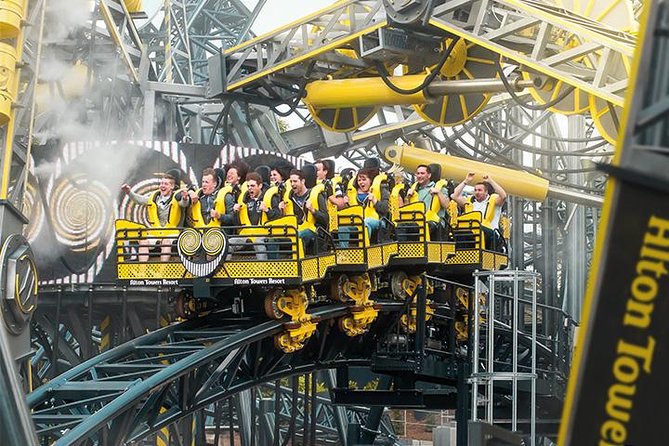Best Telescopes under $500 of
Having up to $500 to purchase a telescope is a good budget, but it can be difficult to spend. It’s too much to buy a beginners telescope, which you can typically find for just a few hundred dollars. However, it’s not enough to purchase a more expensive advanced telescope. You’ll find that there are many telescopes for $1000, and in some cases, even more than this too.
But even if you’re on a tighter budget, it’s definitely enough to get going in astronomy – as long as you have powerful optics and the right additional accessories, you should be good to go. So, here are a few of the best telescopes you can find out there that cost less than $500.
Aperture: 130mm | Focal Length: 650mm | Focal Ratio: f/5.0 | Features: Adjustable tripod, Red Dot Finder
When you’re trying to find the best telescope under $500, you have to shop around a bit. There are many different options within this sort of price range, but most of them will have similar capabilities – 4 to 6 inches of aperture to allow light into the optical tube is a must.
The Starsense Explorer DX 102 is at the lower end of this, though it makes up for this in other areas. The younger brother of the Starsense explorer DX 130AZ, this model have a more portable design and offers really good value for money. It works extremely well in areas of low light pollution, and at the highest useful magnification you’ll be able to spot plenty of objects in the night sky.
You can use this model with the Starsense Explorer app – this might not appeal to those that prefer more visual astronomy and finding their own stars and constellations, but for beginners it can be particularly useful. Each night the app will be able to tell you the best and brightest images in your location.
It’s one of the smaller telescopes on this list, This means that if you’re looking for a portable telescope, then this could be a great choice – of course, quite a lot of this will come down to personal preference and whether you plan to use the telescope solely at home, or you plan to take it out of the city to get crisp images.
So when it comes to the best telescope under 500 dollars, this is one to check out if you’re not too bothered about how much magnification it has to offer. Whilst it won’t be enough to spot deep sky astronomical objects, it’ll definitely be enough to spot star clusters in the night sky, which is all that many amateur astronomers need.
Verdict: With an assembled weigh of little over 14 lbs, this is a user friendly telescope with a solid focal ratio if you’re just getting started.
Orion SpaceProbe 130ST
Sale Orion 09007 SpaceProbe 130ST Equatorial Reflector Telescope (Black)
- This 5.1″ aperture reflector telescope gathers an ample amount of light for great views of the planets and Moon, as well as brighter galaxies, nebulas, and star clusters
- Compact optical tube design for easy portability and fast f/5 focal ratio for pleasing wide-field performance makes the SpaceProbe 130ST EQ a very versatile telescope the whole family can enjoy
- Sturdy equatorial telescope mount and adjustable tripod allows manual slow-motion tracking of celestial objects as they appear to migrate across the night sky
Aperture: 130mm | Focal Length: 650mm | Focal Ratio: f/5 | Features: Reasonable price, included eyepieces
The Orion SpaceProbe 130ST is one of the top choices if you’re looking for a higher magnification than a standard refractor telescope. It can take a little effort to set these types of telescope up, but it is likely worth it for those looking to see into the night sky clearly. It should be powerful enough to pick out bright objects out there in the solar system.
Generally with telescopes, the larger the aperture, the further you’re going to be able to see. This model has a 5.1 inch aperture, which is pretty reasonable considering its price. It is a pretty typical Newtonian reflector that uses an equatorial mount – this is important, as this style of mount is heavily preferred to the alternative Alt-az amongst professionals. The adjustable tripod that it comes with is well made.
The hand control on this telescope is fairly easy to use, even if you’re brand new to astronomy. This is an important factor, as tracking and adjusting your telescope is one of the things you want to focus on initially when just starting out. When it comes to budget telescopes, I quite like reflectors. They do take a little while to set up, but you can get some high quality optics.
As well as the telescope itself, this set also comes with a 2x Barlow lens. This should be enough to get you started, and then after some time, you can consider purchasing a 3x Barlow lens to use with the telescope too. It also comes with a handy red dot finderscope you can use to discover new star as well.
It’s a good choice if you want to try your hand at astrophotography, as you can easily pick up a cheap smartphone adapter to use with it. It has a relatively good image quality, and although it won’t give you professional photos and high contrast images, it’s a great place to start. Though it does have a short focal length, which means it may struggle with distant galaxies and nebulae – but it’ll be perfect for closer objects in the nighttime skies.
This is one of my favorite telescopes that’s available if you’re trying to stick below a $500 budget. It has excellent optics, a good build quality and above all, for those getting started it is very portable and easy to use. It is definitely worth considering if you’re going to purchase a new telescope.
Verdict: This is a professional telescope that offers a really good experience. It’s ease of use is unsurprising if you’re used to Orion telescopes, and it comes with two eyepieces to give you some good varied magnification too.
Celestron Astro Fi 90
Aperture: 90mm | Focal Length: 910mm | Focal Ratio: f/10.1 | Features: Small size telescope, impressive images
Whilst Celestron’s Nexstar is a Cassegrain and a computerized telescope, the Astro Fi 90 refractor telesope is better for those getting to grips with doing things manually. Yes, this does mean that it can be more difficult to find objects in the night sky. However, the truth is that for many people, this will actually be a little better, as it can enable you to get to grips with visual astronomer and finding objects yourself.
The optical quality of the telescope is good, and so is the overall build quality of the whole thing too. The Wi-fi and Skyportal app make it simple enough to set this telescope up, which can be a laborious task with reflectors – you can use the finderscope that comes with it to make this a little bit easier too. It gives you the ability to track celestial objects very easily, and it has strong optical performance overall.
Though it doesn’t have a particularly large aperture, it does come with two additional eyepieces that you can use. These eyepieces are both very good quality, and give you the ability to get a more magnified view of the night sky above you. Plus, the telescope does come with an accessory tray that makes it easy enough to access them.
So all in all, this telescope comes as one of the most highly recommended out there if you’re trying to stick to a $500 budget. It will enable you to spot some of the fainter objects in the night sky by allowing more light through the telescope tube, and it’s perfect if you’re searching for your first telescope.
Verdict: This Celestron telescope will be enough for you to get bright images of the sky, and should be enough for you to see the lunar surface, star clusters and much more.
Orion SkyQuest XT6
Sale Orion 8944 SkyQuest XT6 Classic Dobsonian Telescope
- Perhaps the best beginner Dobsonian reflector telescope you can buy – big 6″ aperture at an amazing price
- A beginner may use a 60mm telescope for a few months or years before deciding they need to upgrade to a better telescope – a 6″ Dobsonian will give you a lifetime of wonderful views
- Simple navigation and no need to polar align makes this Dobsonian reflector telescope extremely ease to use for the whole family
Aperture: 150mm | Focal Length: 1200mm | Focal Ratio: f/8 | Features: Powerful telescope, detailed views
The Orion Skyquest XT6 is another good Orion telescope worth considering if you’re looking for an easy to use telescope that’s available at a pretty cheap price. It’s the older brother of the XT5 and the XT4.5, and for amateur astronomy, you would struggle to find something better at this sort of price.
I always like to recommend a Dobsonian telescope to those who are brand new to astronomy, so if this is you, then this is definitely a telescope worth considering. The telescope has an 8 inch aperture and a 1200mm focal length, which gives us a focal ratio of f/5.9. This is about the maximum aperture that you’re going to get within our budget.
This Dobsonian reflector telescope is quite large in size, but it isn’t especially heavy so it could be used if you’re looking for something that’s portable too. The optical tube is quite big and bulky, but it’s made this way to collect light, which it does very well. The finderscope is closely attached to the optical tube, and works well for identifying new areas to explore and finding celestial objects.
Whilst this telescope does lack a little bit in getting a wide field of view, it excels at high magnifications. It also allows for little light loss, which means you’ll be able to take advantage of the huge aperture. So for this reason, it’s great to use with a Barlow lens. You’ll be able to get a great deep sky view with this telescope, and it’s perfect for star hopping.
It will take a little while to assemble, but this is typically the case with any reflector telescope. In fact, that’s one of the reasons I like to recommend Dobsonian telescopes – because they’re tough to set up, you can usually get them at a low price point, but this can be good for a beginner. This is definitely a good option for anyone who wants a powerful reflector telescope that is easy enough to use.
Verdict: This is a pretty solid telescope under $500, and like any good Dobsonian, it comes with a great magnification for more detailed viewing.
Celestron Nexstar 130SLT
Aperture: 130mm | Focal Length: 650mm | Focal Ratio: f/5 | Features: Computerized mounts, impressive images
It’s no secret that the Celestron Nexstar series is one of my favorites out there, and the Nexstar 130SLT is a good option for those looking for telescopes under 500 dollars. Whilst telescopes from the Nexstar SE series are quite expensive, this model combines everything you need in a telescope for a much lower price.
It’s a computerized telescope, which means that it’s very easy to start finding objects in the sky. Sure, it will take a little longer to set it up and align your telescope, but it is worth the extra effort. The Star Locating Tecnology (that’s what SLT stands for) that this computerized telescope uses is easy enough to use once you get the hang of it. It also helps beginners step past a steep learning curve of actually being able to find celestial objects in the first place.
As a Newtonian reflector, the 130SLT manages to gather a large amount of light, giving you the best possible view of the sky. The telescope comes with 2 eyepieces, but I always advise people to upgrade to Kellner eyepieces when they can. This is because an extra eyepiece that’s of a higher quality will allow for sharp images.
However, these eyepieces will be good enough to use for a while. Anyhow, a Newtonian reflector like this will be suit those who are looking to dip their toes in astrophotography, too. The telescope has an aperture of 5 inches, with a focal length of 650mm. This gives us an overall focal ratio of f/5.0 – this is quite wide, but it’ll allow you to track objects.
It does come with some advanced features, but the only downside of this telescope in my opinion is that it comes with an Alt-az mount, and not an equatorial mount. If you’re used to using an equatorial mount, then this might be a deciding factor for you, as a telescope mount is one of the most important parts of your setup.
Typically, although Alt-Az mounts are easier to use, it’s good to get used to equatorial mounts as this only rotates on one axis, which is better for following stars. This shouldn’t put you off this telescope however, as the Celestron Nexstar 130SLT is still a fantastic telescope to have. Plus, an Alt-Az mount is super easy to set up, especially if you compare it to a German Equatorial Mount.
Verdict: This computerized telescope allows for smooth tracking of objects, though you’ll want to keep an eye on the battery life when you’re using it away from home.
Celestron Astromaster 102AZ
Sale Celestron – AstroMaster 102AZ Refractor Telescope – Refractor Telescope for Beginners – Fully-Coated Glass Optics – Adjustable-Height Tripod – BONUS Astronomy Software Package
- POWERFUL REFRACTOR TELESCOPE: The Celestron AstroMaster 102AZ Refractor telescope is a powerful and user-friendly refractor telescope. It features fully-coated glass optics, a sturdy and lightweight frame, two eyepieces, a StarPointer red dot finderscope and an adjustable tripod. Dovetail Compatibility: CG-5 saddle plate
- HIGH-QUALITY 102MM OPTICS: The heart of the system is a fully-coated 102mm primary mirror. The AstroMaster mount features a panning handle that allows you to make precision adjustments to view celestial and terrestrial objects.
- QUICK SETUP AND LIGHTWEIGHT FRAME: This telescope for adults and kids to be used together features a lightweight frame and a manual Altazimuth mount for smooth and accurate pointing. Setup is quick and easy, with no tools required.
Aperture: 102mm | Focal Length: 660mm | Focal Ratio: f/6.5 | Features: Setup with relative ease, low total weight
The Celestron Astromaster 102AZ is a fantastic telescope not just for those that are looking to get into astronomy, but particularly for the amateur astrophotographers out there. It’s a good option if you want a telescope you can use with your iPhone to take pictures of the night sky. However, you’d actually have to have two phones to really make this work.
The intention with this telescope is that you can easily download the StarSense app which will help introduce you to astronomy. To be fair, it can be very overwhelming for a novice to purchase a telescope and have no idea how to use it – some telescopes don’t have great instructions, and often you’re left on your own to figure things out.
After you’ve set everything up, app will then generate a list of the best things that you can see in the night sky that evening. You can then follow the on screen arrows to position your telescope to see something else. But, the app is basically there instead of the finder scope which you have with most other telescopes.
You can’t actually use the same phone to take photographs – this is where another phone, and an adapter, would come into play. Or, you could set this up with a DSLR too, but that’s probably a better idea using a telescope with a larger aperture. Either way, it’s relatively easy to use this refractor telescope to get some great deep sky images.
The app really does make it very easy to get started. The only limiting factor with this telescope is that it only has a 4 inch aperture, which may not allow enough light in to see things in great detail. This is pretty common when purchasing a telescope within this price range.
Though from a positive perspective, you get a quick telescope setup time, and you can be using the telescope within a few minutes. This is usually the case with a refractor telescope, as they’re much easier to set up than a reflector. You don’t need to worry about collimation with a refracting scope like you do with a reflector.
It is pretty reasonably priced too, which makes it one of the best options if you’re looking for a family telescope, though it may not quite be enough for viewing planets in great detail. Though at the price, the Astromaster series tend to be excellent telescopes for their price.
Verdict: If a well made telescope is what you’re after, then the Astromaster 102AZ may be worth checking out. It comes with a stainless steel tripod, and you don’t get only one eyepiece, but two instead.
Sky-Watcher S11610
Aperture: 203mm | Focal Length: 1200mm | Focal Ratio: f/5.9 | Features: High magnification, great buy
Another Dobsonian telescope worth recommending is the Sky-Watcher S11610. It has an 8 inch aperture and a 1200mm focal length, giving the telescope a fast focal ratio of f/6.0. Having more power will allow you to see deeper into the solar system, and get a really good look at some deep sky objects.
One good thing about this telescope is that it comes with tension handles on the sides of the optical tube, which can make it much easier for you to use the telescope (this is great for kids, too). Having a tension control handle on the side of the telescope isn’t typical with lower costing models, but it can give you increased accuracy.
It also comes with a Crayford focuser. This can allow you to make small adjustments to the positioning of your scope with zero image shift. When you’re trying to view deep space objects like cloud belts, you’ll need a tool like this, as you can’t do much gauging with the naked eye. So, having a pinion focuser like a Crayford is a good idea.
This telescope comes with a wide range of accessories, including eyepieces, a focuser and a great finder scope. The bad things about this telescope is definitely the size – it’s way too bulky for me to want to carry this anywhere with me, so if you want something portable, this isn’t a great option.
However, the heavy base is quite good if you want something built well, as some steel tripods you’ll find are flimsy. So, although it’s heavy, it’s still a great telescope to have if you want something that’s going to last, and it offers strong optical performance too.
Verdict: Sky Watcher are usually a good choice when it comes to value for money, with its teflon bearings and parabolic mirror being a sure sign of its quality.
Celestron Nexstar 4SE
Sale Celestron – NexStar 4SE Telescope – Computerized Telescope for Beginners and Advanced Users,Fully-Automated GoTo Mount,SkyAlign Technology,40,000+ Celestial Objects, 4-Inch Primary Mirror,Orange
- NEXSTAR 4SE COMPUTERIZED TELESCOPE: Celestron’s iconic orange tube telescope combines 4″ Maksutov-Cassegrian optics with updated technology and the latest features for an amazing stargazing experience for beginners and experienced observers alike.
- 4-INCH APERTURE MAKSUTOV-CASSEGRAIN TELESCOPE: 4-inch primary mirror packs enough light-gathering ability to deliver impressive views of the Moon and planets, along with deep-sky objects like the Orion Nebula, while retaining a compact form factor.
- FULLY-AUTOMATED GOTO MOUNT: With a database of 40,000+ celestial objects, NexStar SE’s GoTo mount locates and tracks objects for you. It’s the perfect telescope for astronomy beginners. NexStar SE is also compatible with StarSense and SkyPortal WiFi.
Aperture: 102mm | Focal Length: 1325mm | Focal Ratio: f/13 | Features: Increased stability, Ideal for beginner astronomers
Another great option from Celestron is the Nexstar 4SE, which is the little brother of the 6SE and also the 8SE. Although some people think it’s a Schmidt Cassegrain design, it’s actually a great entry level Maksutov Cassegrain telescope.
This high quality telescope allows you to gather enough light to see all the major constellations in the sky (that are visible from your location, anyway!). It isn’t a high magnification scope, but it’s definitely a great place to get started. Buying an additional barlow lens can be a great idea too, as it will allow you to use this scope to get more magnified views.
It’s also worth mentioning the altazimuth mount that this telescope uses, which is pretty much its selling point. It’s a fork arm Go-to mount, which means you can literally use the controller it comes with to enter thousands of different stars in the sky for it to look at. This is easier than using a standard reflector or refractor, though you’ll have to align the telescope properly first.
The bonus of going for a computerized telescope like the Nexstar 4SE, or its big brother the 5SE, is that it has a full object database for you to take advantage of. Though it can take a little while to get used to, it can prove invaluable for beginners that are just getting started with looking up into the solar system.
This telescope comes with a computerized hand control, an eyepiece rack and can help reduce diffraction spikes. So if you’re looking for a good Maksutov Cassegrain telescope that you can easily program to find the stars and objects in the night sky you want to, then considering the 4SE is a wise idea.
Verdict: Usually one of our top picks if you’re looking for a new telescope, though its price usually fluctuates above $500. With slow motion controls, it’s easy to locate celestial objects in the night sky with the Celestron Nexstar 4SE.
It is possible to see Pluto with a telescope at times, but it is very difficult and an amateur astronomer would not be able to do this. Pluto is over 30x further from the Sun than Earth, so it doesn’t have the same amount of illumination as other planets. You’ll need a telescope with great optics and a high aperture if you want to see Pluto or any other distant objects.
I like to use a reflector telescope (I don’t mind any but usually a Newtonian reflector) for deep space viewing, as this gathers the most light and lets us see deeper into space. To get a refractor telescope with the same aperture, you’ll usually have to pay significantly more.
Deciding between a reflector telescope and a refractor telescope is not an easy decision to make. Generally, I like to recommend a Dobsonian telescope to absolute beginners (a Dob is a type of reflector) as this gets you used to aligning a telescope and has the most power for your money. However, refractors do have their benefits over reflectors, as refractors typically will give a better quality of image, making them the better choice for astrophotography.
A fast telescope just refers to the telescopes focal ratio, and a telescope with shorter exposure is called “fast”, whilst a telescope with a longer exposure is called “slow”. If a telescope has a focal ratio of f/4, then it can gather light ‘faster’ than a telescope with a focal ratio of f/8.0 – the focal ratio is just determined by the aperture and the focal length of the telescope.
This is difficult to say, because there are a lot of brands out there and the best telescope brands cost a lot more than a few hundred dollars. Within our price point, it’s a safe bet to stick with Celestron or Orion, who are actually made by the same company (Skywatcher too!).
One of the main things that you’ll want to think about buying with a new telescope is the tripod, or mount, that you’re going to use with it. There are different adjustable tripods out there for you to choose from, and some are better than others. Generally, we split these mounts into two categories – equatorial and Alt-azimuth. Whilst an Alt-azimuth mount can be good for beginners, and equatorial is the better option for those who are a bit more serious, and may be interested in astrophotography.
These are just some of the best telescopes under 500 dollars that are available right now. Each astronomer will have their own opinion, and these are just a few of my favorites. Feel free to explore the website and check out some of the other telescopes that I think are worth considering as well.
Finding a good telescope isn’t easy. You can spend hours and hours scrolling through all of the different brands and models available. And although you might learn a few things, at the end of it, you can be no closer to making a decision which is the best option for you.
It really depends on what you are looking for. It’s all good considering the aperture, focal length & specifications of your telescope but it all comes down to what you need. So, make a decision on which telescope you need and continue on your astronomy journey! As always, please feel free to leave a comment below.





